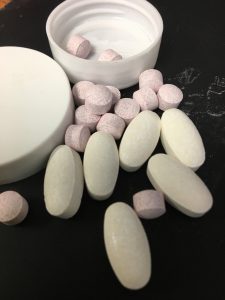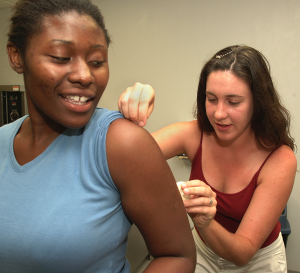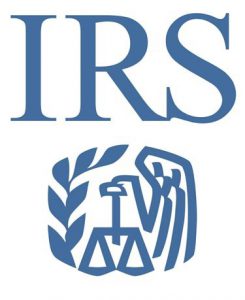
by Heidi Copeland | Jan 29, 2020
We have a silent killer amongst us. It is the use and abuse of opioids! In fact, opioid use and abuse is a classified epidemic.

Too many pills?
Photo Source: Heidi Copeland
The opioid epidemic refers to the growing number of deaths and hospitalizations due to opioid use.
According the Centers for Disease Control and Prevention (CDC), overdose deaths from opioids, including prescription opioids, heroin, and synthetic illicit opioids (like fentanyl), have increased almost six times since 1999.
What is the appeal of opioid abuse? In the 2015 National Survey on Drug Use and Health (NSDUH), 11.5 million adults who abused prescription pain relievers at least once in the past year were asked their reasoning for misuse. The top answer included to relieve physical pain! (63.4%) Other reasons included relaxation, relieve tension, feel good, help with sleep, or to increase or decrease the effects of other drugs (Lipari, Williams, & Van Horn 2017).
There is no doubt that opioids are an effective pain reliever, however, the speed in which this abusive opioid epidemic has grown provides plenty of reasons everyone should be concerned. An opioid addiction can endanger the safety of each of us.
How did this epidemic begin? The epidemic stems from the late 1990’s. At the time, no one knew how quickly misuse of a prescription opioid could lead to an addiction. In a relatively short period of time opioid overdose rates, both prescription opioids as well as illicit synthetic opioids, skyrocketed. In the year 2017 alone, more than 47,000 Americans died as a result of an opioid overdose and 1.7 million individuals suffered from substance use relating to pain killers as a whole (NIH 2018).
The epidemic is also causing serious repercussions socially and economically. The Center for Disease Control and Prevention (CDC) estimates the total cost of opioid abuse to be a $78.5 billion a year and is a burden to our economy. Additional issues associated with opioid misuse can include loss of worker productivity, addictive behavior, and higher crime rates (Rich, Kornfield, Mayes, & Williams 2019).
Every individual can positively contribute to ending this epidemic. Get educated. Be aware of the signs of someone struggling with an opioid abuse and addiction. Recognize character traits associated with opioid abuse like loss of control, preoccupation with drug use, and willingness to continue using despite the negative consequences.
There are promising practices and resources to help end this epidemic. The U.S. Department of Health and Human Services (HHS) is directing their attention to this epidemic with efforts focused on (NIH 2018):
- improving access to treatment and recovery services
- strengthening our understanding of the epidemic through public health surveillance
- providing support for research on pain and addiction
- advancing alternative practices for controlling pain
As well, both National and State Prescription Drug Monitoring Programs (PDMP) are promising drug prevention tools.
Never doubt that a small group of thoughtful committed citizens can change the world; indeed, it’s the only thing that ever has. (Margaret Mead) Together, we can all do our part stop this epidemic.
Bailee Hurd, University of Florida Health Education Intern
Bonner, Michael. “’Opioids Are the Health Crisis of This Generation’.” Southcoasttoday.com, Southcoasttoday.com, 24 Sept. 2017, www.southcoasttoday.com/news/20170922/opioids-are-health-crisis-of-this-generation.
Lipari, Rachel, et al. “Why Do Adults Misuse Prescription Drugs?” Https://Www.samhsa.gov/Data/Sites/Default/Files/report_3210/ShortReport-3210.Html, Substance Abuse and Mental Health Services Administration, 27 July 2017, www.samhsa.gov/data/sites/default/files/report_3210/ShortReport-3210.html.
National Institute on Drug Abuse. “Opioid Overdose Crisis.” NIDA, 22 Jan. 2019, www.drugabuse.gov/drugs-abuse/opioids/opioid-overdose-crisis.
“Opioid Overdose.” Centers for Disease Control and Prevention, Centers for Disease Control and Prevention, 18 Oct. 2019, www.cdc.gov/drugoverdose/.
Rich, Steven, et al. “A New Look at How the Opioid Epidemic Evolved.” The Washington Post, WP Company, 23 Dec. 2019, www.washingtonpost.com/graphics/2019/investigations/opioid-pills-overdose-analysis/.

by Angela Hinkle | Jan 24, 2020
My favorite time – snack time! For February, National Snack Food Month, let’s celebrate these tasty morsels for a whole month.
Go Beyond the Snack Aisle
Snacks often have a bad reputation, at least in terms of health. It’s true that snack food aisles are often filled with high fat, high calorie, high sodium, and high sugar choices. But snacks can be great sources of fiber, vitamins, minerals, proteins, and healthier fats and carbohydrates. You may just have to wander to other parts of the store next time you shop.
Think Mini Meal
When you snack, think of it as a mini meal. Though you could plan tomorrow’s dinner to be a plate of snack cakes with a side of potato chips, hopefully you come up with something more satisfying than that – both in taste and nutrition. Additionally, when we snack on healthier foods in between meals, it gives our bodies the sustainable energy it needs to make it to that next meal.

Snacks – Fun, Tasty, and Healthy
Photo Source: Angela Hinkle
Snack MyPlate
Try snacking from all five food groups this month.
- Whole grains – popcorn, granola, whole grain crackers
- Fruits – apples, bananas, oranges, raisins
- Veggies – pea pods, cucumber slices, carrots
- Dairy – string cheese, yogurt cups, individual shelf stable cartons of milk
- Protein – hard-boiled eggs, mixed nuts, healthy beef jerky
Make Homemade Mixed-Up Food Group Snacks
- Whole grain pita or multi-colored pepper slices dipped in guacamole or hummus
- Apple slices or carrots with peanut butter dip
- Cherry tomatoes with mozzarella and basil
- Fruit smoothies or protein shakes
- Yogurt with granola and mixed berries
- Banana Sushi – smear a whole wheat tortilla with peanut butter, put a banana in the middle, roll it up, then cut it into “sushi” slices
For more great snacking ideas, check out 10 Snack Tips for Parents, MyPlate Snack Tips for Kids, and 25 Healthy Snacks for Kids
Delicious, healthy, on-the-go snacks. Be creative and keep it healthy this February – National Snack Food month.

by Samantha Kennedy | Jan 13, 2020

A delicious cup of hot tea is a great way to start the day and can provide a daily dose of health-promoting antioxidants.
(Photo source: Samantha Kennedy)
For me, there’s nothing better than a hot cup of tea on a chilly morning – or any morning, really. The rich flavor and fragrant steam work together to perk me up and help me get ready to take on the day. And in the evening, a nice, warm cup of tea can also help me relax before settling down to sleep. The key is finding the right kind of tea for the task.
Types of Tea
There are five major types of tea: green, black, white, red, and herbal. All non-herbal teas are produced from the leaves of the warm-weather evergreen tea plant, Camellia sinensis. The degree of processing or oxidation of the leaves determines which type of tea is produced.
Green tea is very minimally processed and the leaves are not oxidized, which results in its light green color and delicate taste. Green tea is very low in caffeine. Green tea is very popular in Asian cultures, but has gained increased popularity around the world.
Black tea has a very rich flavor and the highest caffeine levels of all types of tea due to the long processing time. The leaves are fully oxidized, resulting in the rich amber color and rich flavor. Some of the most popular and common types of black tea are Early Grey, English Breakfast, and Darjeeling.
Red tea is oxidized for less time than black tea, resulting in a milder flavor and lighter color. The flavor intensity and caffeine levels of red tea fall somewhere between green and black tea. The most common type of red tea is Oolong, which is very popular in Asia.
White tea is produced from young tea leaves and unopened buds. The resulting brew has a velvety, delicate flavor and very light, “white” color. Since it is so minimally processed, it has very little caffeine.
Herbal tea is not produced from the leaves of the tea plant. Instead, herbal teas are created through a combination of herbs and other plants, often utilizing the leaves, stems, and roots. Herbal tea does not have caffeine and is often used medicinally to treat a variety of ailments.
Potential Health Benefits
The health benefits of tea, especially green tea, have long been touted. The fermentation process involved in green tea production increases the levels of a type of antioxidants called polyphenols, which can help reduce cell damage caused by the byproducts of regular cell production in the body.
According to two Harvard School of Public Health studies, those who drank tea regularly showed a decreased risk of developing Type 2 diabetes compared to non-tea drinkers. The substances in tea, such as polyphenols, have also been linked to lower risk of cardiovascular disease, cancer, and stroke and have been shown to help lower blood pressure and cholesterol.
One note of caution: Some chemicals in tea are known to bind to iron, thereby decreasing its absorption in the body. Those who suffer from iron-deficiency anemia may want to consult a physician before increasing their tea consumption.
Tea drinking is not a cure-all. However, drinking tea as part of an overall healthy diet may provide added health benefits that can help promote healthy cells and blood vessels.
So take the time to smell (and sip and savor) the tea while toasting to better health. Happy brewing!
Additional Resources:
Health benefits linked to drinking tea (Harvard Medical School)
Tea: A cup of good health? (Harvard Medical School)
Take Time for Tea: For Health and Well-being (North Dakota State Extension)
Extension classes are open to everyone regardless of race, creed, color, religion, age, disability, sex, sexual orientation, marital status, national origin, political opinions or affiliations.

by Melanie Taylor | Jan 9, 2020

One of the best ways to help prevent the flu this season is to get vaccinated. Even if you still get the flu, the severity and length of illness may be diminished. (Photo source: UF/IFAS file photo)
The holiday season has passed and now we are well on our way into 2020 with a very severe flu season. You are the best person at making sure you do not get the flu. Here are a few tips that you should consider as this flu season continues and still has not reached its peak.
- GET VACCINATED. It takes, on average, two weeks for the flu vaccine to reach its full potential, so if you have not gotten the flu shot, get it NOW. Even if you still get the flu, it will likely be shortened in time and strength if you are vaccinated.
- WASH YOUR HANDS. Washing your hands frequently will help protect you from the flu. If soap and water are not available, use an alcohol-based hand sanitizer.
- AVOID CLOSE CONTACT WITH PEOPLE WHO ARE SICK. Be sure to avoid direct contact with anyone that is sick. If you must come in contact with them be sure to wash your hands once you leave. If you are sick, keep your distance from others to protect them from getting sick too.
- AVOID TOUCHING YOUR FACE. Germs are spread quickly when a person touches something that is contaminated with germs and then touches his or her eyes, nose, or mouth. So make a conscious effort to keep your hands away from your face.
- COVER YOUR MOUTH AND NOSE WHEN YOU COUGH AND SNEEZE. Cover your mouth and nose with a tissue when coughing or sneezing, or sneeze/cough into your closed elbow. These steps may prevent those around you from getting sick.
- STAY HOME WHEN YOU ARE SICK. If possible, stay home from work and school when you are sick. This is the best way to avoid spreading your germs to other people. The CDC (Centers for Disease Control and Prevention) recommends you stay home for at least 24 hours after your fever is gone except to get medical care or for other necessities. They also recommend that your fever should be gone for 24 hours (without the use of a fever-reducing medicine) for you to no longer be considered contagious.
- PRACTICE GENERAL GOOD HEALTH HABITS. Clean and disinfect frequently touched surfaces at home, work, and school, especially when someone is sick. Wash backpacks, coats, and other items regularly. Get plenty of sleep, be physically active, manage your stress, drink plenty of fluids, and eat nutritious food.
Follow the tips above and maintain the best health practices possible and hopefully you will be one of the lucky people that avoids the dreaded flu this year. Wishing you all a healthy and happy 2020!
Source: https://www.cdc.gov/flu/prevent/prevention.htm

by Heidi Copeland | Jan 9, 2020

The deadline for filing your federal income tax return is April 15, 2020. (Photo source: IRS.gov)
The Internal Revenue Service has announced that they will begin accepting paper and electronic tax returns beginning January 27, 2020. The IRS encourages everyone to consider filing electronically and choosing direct deposit, as it is fast, accurate, and the best way to get your refund as quickly as possible.
Nonetheless, many software companies and tax professionals are accepting income tax return information now and promising instant refunds. KNOW that money being promised comes with a charge. As they say, there is NO free lunch, especially around tax time.
By law, the IRS cannot issue refunds for people claiming the Earned Income Tax Credit (EITC) or Additional Child Tax Credit (ACTC) before mid-February. The law requires the IRS to hold the entire refund − even the portion not associated with EITC or ACTC. This law change, which took effect in 2017, helps ensure that taxpayers receive the refund they are due by giving the IRS more time to detect and prevent fraud
The IRS also wants taxpayers to be aware it will take several days for these refunds to be released and processed through financial institutions. Factoring in weekends and the President’s Day holiday, the IRS cautions that many affected taxpayers may not have actual access to their income tax refunds until the end of February 2020.
The filing deadline to submit 2019 tax returns is Wednesday, April 15, 2020. Procrastinators can request a six-month extension to submit their returns (Form 4868), but you only have until midnight April 15, 2020 to pay taxes owed without penalty.
It is amazing to know that the IRS issues more than 9 out of 10 refunds in less than 21 days. Choosing e-file and direct deposit for refunds remains the fastest and safest way to file an accurate income tax return and receive a refund. However, it is possible your tax return may require additional review and take longer. Where’s My Refund? has the most up to date information available about your refund.
Your refund should only be deposited directly into accounts that are in your own name, your spouse’s name, or both if it is a joint account. No more than three electronic refunds can be deposited into a single financial account or pre-paid debit card. Taxpayers who exceed the limit will receive an IRS notice and a paper refund.
Whether you file electronically or on paper, direct deposit gives you safe access to your refund faster than a paper check.
Additional Resources:
Free Tax Return Prep for Qualifying Tax Payers (IRS)
What to Bring to Your Local VITA or TCE Site (IRS)










